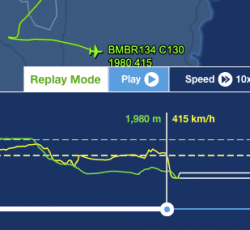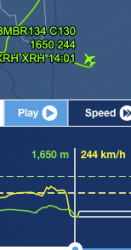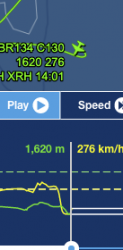Captain Halliday
Established Member
- Joined
- Jun 1, 2014
- Posts
- 4,792
BREAKING: Reports contact has been lost with the LAT that was dropping retardant on fires in the Snowy Mountains region.
Yes, reports coming in of a C130 air tanker crashed in the snowy monaro region.BREAKING: Reports contact has been lost with the LAT that was dropping retardant on fires in the Snowy Mountains region.
Large Air Tanker crashes while fighting bushfire in NSW, ABC understands
I was just reading thatBREAKING: Reports contact has been lost with the LAT that was dropping retardant on fires in the Snowy Mountains region.
AFF Supporters can remove this and all advertisements
3 US residentsConfirmed by Premier the RFS C130 LAT crashed east of Cooma. RIP3
Wreckage found NE of Cooma. RAAF circling:
View attachment 204317
Oh dear. Not good headlines in US media then. Very sad. They have interviewed US pilots just recently.3 US residents



What is he Stall speed of a C130 carrying 15T payload plus fuel?. Google reckons lts about 185kmh but that may be the minimum with no payload.
The speeds below are Ground speed.
It descended 350 metres (1150feet) in 2 minutes








Looks like it entered the right turn in a very low visibility area and at low altitude. No spare altitude to recover?
Stall?
Some other kind of malfunction?
Loss of situational awareness + turn = loss of altitude conducting the turn?


